
eDNA research on Department of Defense lands
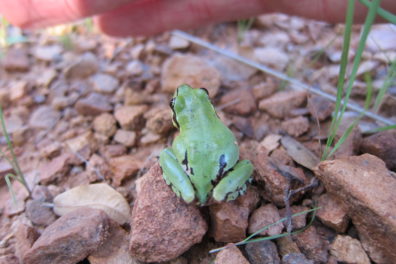
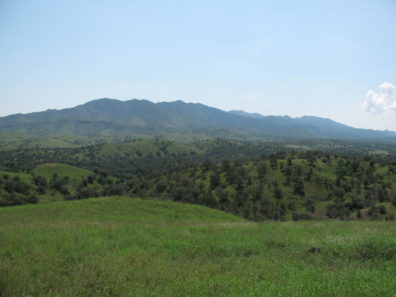
Arizona treefrogs at Fort Huachuca
Monitoring Amphibian Populations Using Environmental DNA (PIs Caren Goldberg, Katherine Strickler, Alexander Fremier, Washington State University). Legacy Resource Management Program projects 12-616 and 14-616.
Before this project began in 2012, eDNA tools had been demonstrated in multiple aquatic systems but hadn’t yet been applied systematically to monitor at-risk species. The project’s objective in 2012 was to demonstrate eDNA technology for two at-risk species at Fort Huachuca, the Arizona treefrog (Hyla wrightorum) and northern Mexican gartersnake (Thamnophis eques megalops). Detection probabilities were very high for Arizona treefrogs, but low for northern Mexican gartersnakes, probably because the snakes shed skin cells less, have more closed skin, and spend less time in water than amphibians. In the renewal of the project (2014-2015), the highly sensitive eDNA test for Arizona treefrogs led to the discovery of previously unknown populations of this rare species.
Amphibians and disease at Fort Huachuca and Eglin AFB
Environmental DNA as a Tool for Inventory and Monitoring of Aquatic Vertebrates (PIs: Alexander Fremier, Caren Goldberg, Katherine Strickler, WSU). ESTCP project RC-201204
This project focused on bringing eDNA detection from proof-of-concept to application. To be useful to DoD natural resource managers and other practitioners, eDNA technology required further development of field and lab methods, and the creation of broadly applicable protocols and guidelines. This project developed and optimized eDNA sampling methods in a range of aquatic systems at Fort Huachuca, Eglin AFB, and Yakima Training Center. At Fort Huachuca, eDNA tests successfully detected Chiricahua leopard frogs (Lithobates [Rana] chiricahuensis) and Sonoran tiger salamanders (Ambystoma tigrinum stebbinsi), as well as their threats American bullfrogs (Lithobates catesbeianus), barred tiger salamanders (Ambystoma tigrinum mavortium), and amphibian pathogenic chytrid fungus (Batrachochytrium dendrobatidis, Bd) and iridovirus (Ranavirus spp.). At Eglin AFB, eDNA sampling detected reticulated flatwoods salamanders (Ambystoma bishopi), ornate chorus frogs (Pseudacris ornata), and Bd. Among the protocols and guidance produced under the project was a set of recommendations for designing eDNA surveys using an adaptive sampling strategy to improve the probability of detecting a target species when it’s present.
The final products for project RC-201204 are currently under review; this project description will be updated when final products are approved for release.
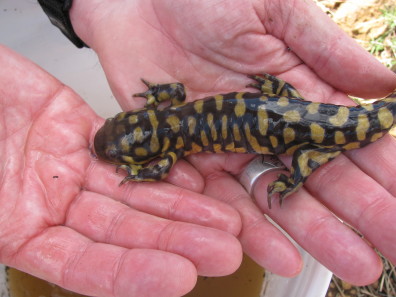

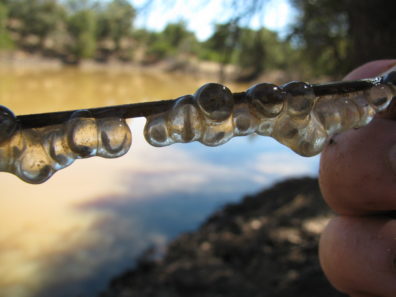
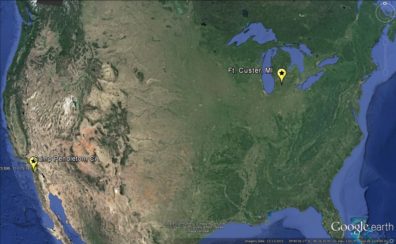
eDNA metagenetics at Fort Custer and MCB Camp Pendleton
Development of an Environmental Metagenetics Approach for Monitoring Aquatic Biodiversity (Lead PI: David Lodge, Cornell University). SERDP Project RC-2240.
The researchers are improving and testing a novel and practical method for monitoring aquatic species richness using molecular genetic tools. In addition to developing a library of genetic resources (mitogenomes) for at risk DoD species, the project uses metagenomic assays to measure species richness and diversity in a range of aquatic environments. The approach is being tested in controlled mesocosms, in thoroughly censused natural habitats, and in less-studied aquatic habitats at Fort Custer Training Center and Marine Corps Base Camp Pendleton.
Fairy shrimp at MCAS Miramar
Using environmental DNA to improve detection and shorten survey time frames for endangered fairy shrimp (PIs: Caren Goldberg, Katherine Strickler, WSU; Dawn Lawson, SPAWARSYSCEN Pacific). Legacy Resource Management Program project 16-786.
DoD installations contain some of the most extensive examples of vernal pools remaining in California, and DoD assumes an enormous management and Endangered Species Act consultation responsibility associated with fairy shrimp and other vernal pool species. To reduce costs, time delays, and uncertainties associated with the current survey protocol for imperiled fairy shrimp, this project is testing the feasibility of using eDNA to efficiently detect fairy shrimp with a high level of precision in vernal pools in California, using Marine Corps Air Station (MCAS) Miramar as a demonstration site. The researchers are testing methods for sampling eDNA in the water from vernal pools during the rainy season and in the soil during the dry season and comparing the results and costs of these methods with the currently accepted survey protocol to improve inference for presence and absence.
Learn more about the project in this Fairy shrimp project profile.
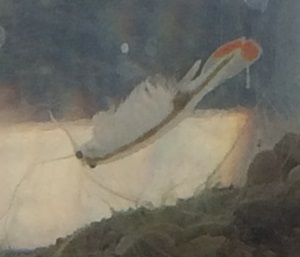
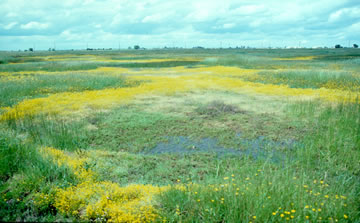
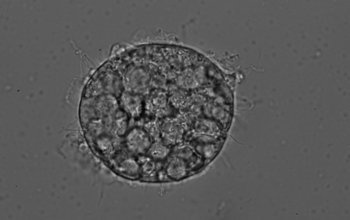
Effects of Climate on Host-pathogen Interactions in Chytridiomycosis
Effects of Climate on Host-pathogen Interactions in Chytridiomycosis (Lead PI: Corrine Richards-Zawacki, Tulane University). SERDP RC-2638.
This project investigates the dynamics of Batrachochytrium dendrobatidis (Bd) and B. salamandrivorans (Bsal), newly emerged fungal pathogens of amphibians, in order to develop predictions of climate change impacts on these systems. Objectives include monitoring seasonal dynamics of Bd and immune defenses in leopard frogs at DoD installations across climatically distinct regions and conducting extensive mesocosm and in vitro experiments. Environmental DNA will be used as part of quantitative monitoring activities. Project goals include generating predictions of the timing, distribution, and severity of chytridiomycosis outbreaks, as well as the potential impact of alternative management strategies on at-risk amphibian communities.